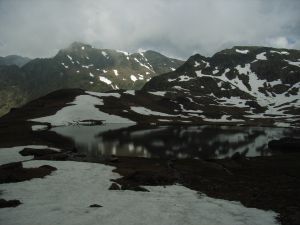From the Disabled Travelers Mailbag: Disabled Access Pyrenees
Posted March 30th, 2010 in access guides, Accessible Travel, general news and helpful informationWelcome back to Disabled Travelers!
You know, every once in a while someone will give me an idea for a post that I literally never would have come up with on my own. Today is one of those days, as we venture through the Pyrenees, the mountain range that makes up the border between France and Spain.
These mountains have shaped the history of both their countries for thousands of years, but tourists worldwide are just now starting to re-discover the beauty of the Pyrenees and their surroundings – and with our Pyrenees access guide, we’ll be in on the secret too.
For a virtual explosion of accessible Pyrenees info, click on over to Barcelona & The Pyrenees Tour by Shlomit Grossman, whose husband Boaz is a paraplegic. The article is detailed and has a lot of great first-hand details on cities, towns, and attractions on the Spanish side of the range, giving hotels by name and facts about vehicle rental. Naturally, the Pyrenees are cold in the winter, so the tourist season for the area runs from about March to early October.
Remember that, while touring the Pyrenees region, you can stay on the French side (most of which is known collectively as Midi-Pyrenees) or the Spanish side. You could even stay on the Australian side, but that’s a whole different set of mountains by the same name, so don’t get confused when you’re looking for info! In France, Accessible Accommodation lists one wheelchair friendly farmhouse in southwestern France that features a pool and fully accessible grounds on three acres of prime, privately-owned land. The Vacances Campsite Index, which serves the Pyrenees area, has disability access as one of its search criteria.
On the Spanish side, the Pyrenees cut through several provinces, but iKnow Spain is a good place to start looking for places to stay; there’s also Costasur, which includes hotels and rental properties. The Hotel Continental Panticosta, conveniently located near the mountains, offers two handicapped accessible rooms. Though it’s mostly focused on Spain’s famous beaches and coastlines, the article Disabled Access Holidays in Spain can give you a good idea of what to expect and a peek at some of your other options in case you decide to go coastal, always a tempting prospect in Spain. La Casa Rural, a site showcasing rental properties in and near the hamlet of Argestugues, includes one house with disability access and many creature comforts in the heart of the unspoiled countryside.
There’s a good variety of thorough guides to Pyrenees tourism on the ‘net, quite a few of them including useful information for handicapped travelers. An excellent resource is Pyrenees Guide, which, in addition to categories covering just about anything you could imagine doing in the region, also has several hand-selected hotel listings that include disability-friendly features. Trip Advisor has information on tourism in Midi-Pyrenees. On the same note, Tourism Midi-Pyrenees is fairly comprehensive. Judging from the ‘net, though, it seems most folks opt to stay in Spain (or maybe they just post more about their visits to Spain; it’s hard to tell!)
It would be almost criminal to go all the way through a post about the Pyrenees without mentioning the tiny country of Andorra, just under 200 square miles, that lies nestled in the eastern Pyrenees mountains, sharing a border with both Spain and France. Though many, MANY times smaller than Rhode Island, Andorra thrives quite comfortably on its tourism industry – and I’ll be reporting on it in a future post. For now, that’s the end of our mountain excursion, but we’ll be talking again real soon: in Andorra, Spain, France, or who knows where! Adventure on!
Si

